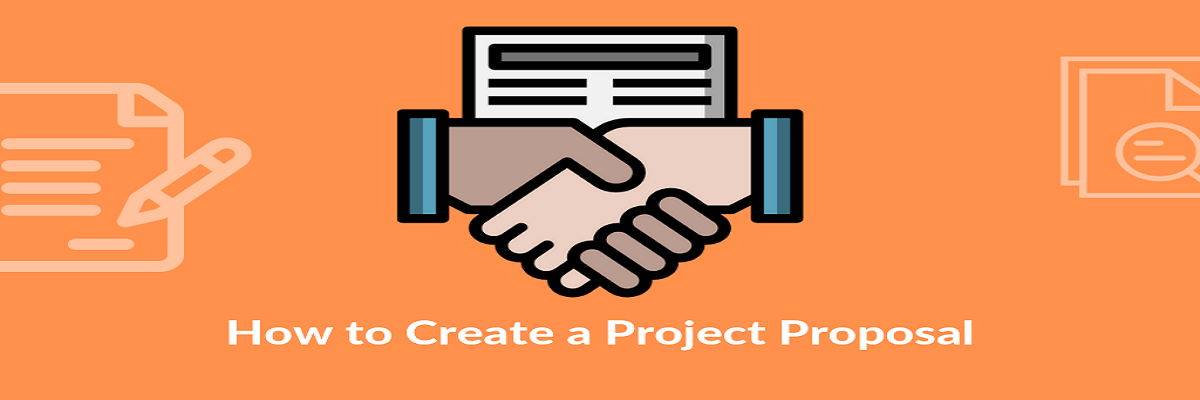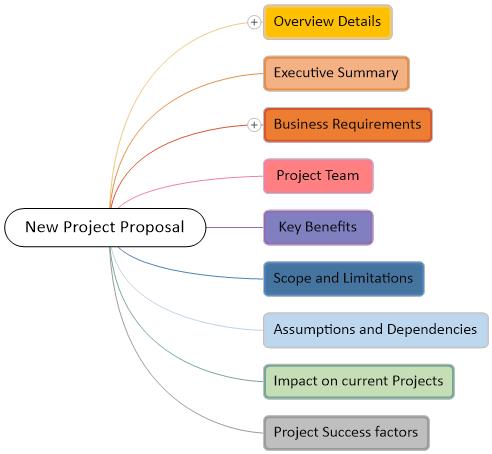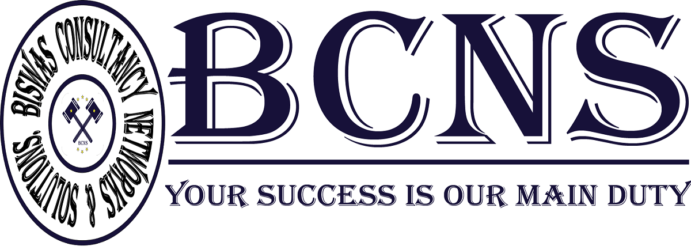

Overview: What is a project proposal?
A project proposal is a document that outlines everything stakeholders need to know to initiate a project. It’s a necessary first step towards getting a project off the ground.
A well-written project proposal informs and persuades, and combines project management skills with a few other essential skills: research, data analysis, and some copy writing.
It follows conventional proposal formats that include the following elements:
- Executive summary. Short and to the point, the executive summary is essentially the project’s elevator pitch. It states the problem clearly, addresses how your proposed project intends to solve the problem, and discusses what a successful project looks like.
- Background or history. This section outlines both successful and unsuccessful previous projects, including how the latter could have been handled better, with the goal of showing how the proposed project will be more successful based on the lessons of the past.
- Requirements. This section briefly summarizes what’s needed throughout the project life cycle in terms of resources, tools, project schedule, etc.
- Solution. The solution section explains how you intend to approach the project and bring it to completion. It covers the project management steps, techniques, and skills needed to get things done more efficiently, as well as how to manage problems.
- Authorization. This section states explicitly who the project’s decision-makers are and the stakeholders authorized by the client to make approval/sign-off decisions.
- Appendix. Any information not included in the actual proposal should be in the appendix, such as materials and resources that team members and stakeholders can use to learn more about the project.
If you’re not sure where to start, know that some of the best project management software applications offer project proposal templates you can use for free from their tools library.
Things to consider before writing a proposal for a project
Before you sit down and begin writing your project proposal outline, there are some things you must consider, including:
Your audience
Identify who the decision-makers are and determine the relationships between them.
Each stakeholder will have their own goals and preferences. Multiple versions of the proposal may have to be written depending on your audience.
- How familiar are they with the project or problem? What do they already know? What do they not know?
- Should you provide background information on a particular topic?
- What do they want to hear?
- Is there any particular way to make them better understand what you want to convey?
For example, if the proposal is for the head of the technology department, jargon and technical language are likely expected.
On the other hand, if it’s a small business owner you’re trying to win over, use simple, easy-to-understand language, with the proposal highlighting the project’s positive impact on the company’s bottom line.
Potential pitfalls
A paper from the Project Management Institute (PMI) Global Congress by Francis McNamara cites four basic reasons why project proposals get rejected:
- Poorly defined proposal
- Proposal not aligned with organizational goals
- Project benefits not clearly and credibly defined
- Ineffective project proposal presentation
In essence, certain projects fail not because they’re bad projects per se but because the proposal lacked clarity and persuasiveness.
Data and research
You need facts, figures, graphs, and charts to substantiate your proposal and justify the project’s existence.
Research past projects, both successful and unsuccessful because you’ll need as much hard data, evidence, and examples as you can provide to craft a convincing proposal.
How to write a project proposal
Remember that the reason you’re writing a proposal is to obtain executive buy-in. You want key people to support your project. You need decision-makers on your side to turn a vision into reality.
You want the proposal to speak to them, and then motivate them to take the next step, which is to green light the project.
Step 1: Define the problem
What’s the problem your project is trying to address? Why is it a problem? Why is it worth solving? Make your audience see the problem the way you see it.
Tips for defining the problem:
- Start strong. Decision-makers usually don’t allot much time to look over a proposal, so make sure that the pain point is succinctly described and in a manner that resonates with them.
- Use facts, not opinion. Although you want your audience to understand the severity of a problem, you don’t want to exaggerate. Instead, use data from your research to back up your assertions.
Step 2: Present your solution
How will your project solve the problem? Why is your solution the better option over other similar solutions? Discuss why other solutions won’t work for the situation.
Tips for presenting your solution:
- Anticipate questions and objections. Be prepared to defend your solution from all angles. Be ready to explain why your more expensive solution is better than a less expensive one, for example.
- Present the solution’s larger impact. Stakeholders generally get more excited about projects with wide-ranging effects than those with limited impact.
- Again, facts over opinion. Provide as many research-backed examples as you can.
Step 3: Define your deliverables and success criteria
This section provides a picture of the functions and attributes of the deliverable, plus how to know if the project is successful.
Tips for defining deliverables:
- Include a delivery date. Define what your project will deliver and what users can expect from it, such as a cloud-based phone system that’s accessible 24/7 from anywhere if it’s a customer service project you’re proposing. Also, indicate when you plan to complete each deliverable.
- Your solution must be SMART. Your success criteria will signal whether the project has been successful. Remember to keep your solution SMART (specific, measurable, achievable, realistic, and time-bound.)
Step 4: State your plan or approach
This is the most critical section of the proposal and discusses how to achieve the project’s objectives. It starts with an explanation of the approach and why it’s relevant and effective. It also explains how problems will be managed.
Tips for planning:
- Introduce project strategies. Will you be using the traditional waterfall approach? Why? Will you be using third-party contractors, in-house staff, or consultants? What will their objectives and responsibilities be? This is your opportunity to discuss the “why” behind the decisions you’re making to get the project completed.
- Explain how problems will be addressed. This explains your project management plan’s risk mitigation strategies.
Step 5: Outline your schedule and budget
This is the section where you break down project costs and detail how you will meet deadlines.
Tips for defining a schedule and budget:
- Provide as much detail as possible. Break your budget down into categories, such as supplies, tools, salary, etc. Include all overhead and indirect costs. A detailed financial breakdown will signal to stakeholders that you’ve done your research and don’t intend to waste their money. Note that certain projects may require financial statements and funding sources.
- Be concrete. Don’t guess. Provide project start and end times, and if certain sections of the project can be done simultaneously.
Step 6: Tie it all together
End your proposal with a conclusion that briefly summarizes the problem, solution, and benefits. Emphasize the significant parts, and make your proposal stand out by restating ideas or facts you want your audience to remember.
Check your proposal for consistency of ideas and whether the elements support each other.
Tips for tying everything together:
- Your proposal should read like a book. Your proposal should tell a story. Every section and element must work together to form a cohesive whole.
- Refrain from introducing anything that doesn’t fit. Be careful not to introduce anything that seems off or doesn’t contribute to the overall objectives of the project.
- Make sure all project proposal elements are present. Check your document and ensure all the necessary elements have been addressed.
Step 7: Edit/proofread your proposal
Rewrite your proposal as necessary to make it interesting, helpful, clear, and persuasive. Ask for feedback, and ensure the proposal is organized and visually appealing.
Tips for editing:
- Check the tone and language. Your proposal is intended for a certain audience type, so make sure the tone and language used are reflective of that. Don’t forget to proofread for grammar, punctuation, or spelling mistakes. You want your proposal to look professional.

